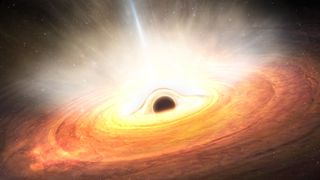
Robert Lea
Robert Lea is a science journalist in the U.K. who specializes in science, space, physics, astronomy, astrophysics, cosmology, quantum mechanics and technology. Rob's articles have been published in Physics World, New Scientist, Astronomy Magazine, All About Space and ZME Science. He also writes about science communication for Elsevier and the European Journal of Physics. Rob holds a bachelor of science degree in physics and astronomy from the U.K.’s Open University
Latest articles by Robert Lea
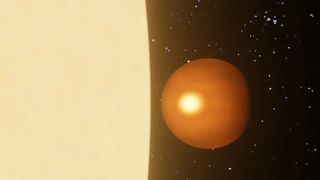
Iron winds and molten metal rains ravage a hellish hot Jupiter exoplanet
By Robert Lea published
"Our observations indicate the presence of powerful iron winds, probably fuelled by a hot spot in the atmosphere."
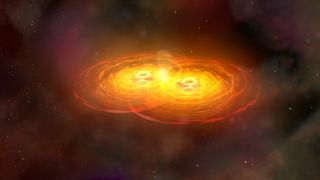
Gravitational waves hint at a 'supercool' secret about the Big Bang
By Robert Lea published
Scientists might be on track to revealing new facets of physics.
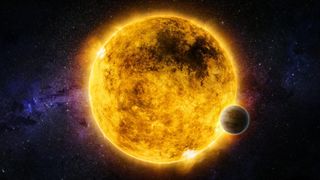
These nearby star systems could be good targets in the search for alien life
By Robert Lea published
NASA's Chandra X-ray space telescope has created a 3-D map of nearby stars that may help astronomers search for alien planets with the potential for life.
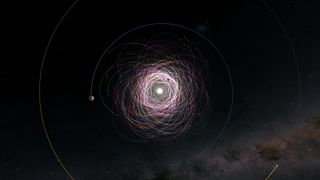
Over 350 asteroids have hidden moons, Gaia space telescope finds
By Robert Lea published
The European Space Agency's Gaia space telescope has found evidence of more than 350 previously unknown moons orbiting asteroids within our solar system.
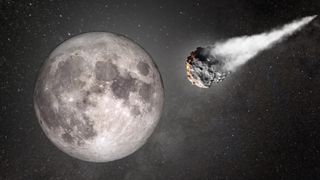
We finally know where the moon's atmosphere comes from
By Robert Lea published
"We give a definitive answer that meteorite impact vaporization is the dominant process that creates the lunar atmosphere."
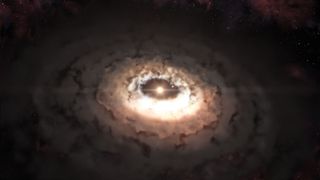
The building blocks of life can form rapidly around young stars
By Robert Lea published
New research could solve the mystery of how the complex building blocks of life first formed.
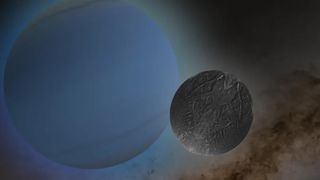
A moon of Uranus could have a hidden ocean, James Webb Space Telescope finds
By Robert Lea published
Astronomers using the James Webb Space Telescope have found that Ariel, a moon of Uranus, has some of the most carbon dioxide-rich deposits in the solar system, hinting at a buried water ocean.
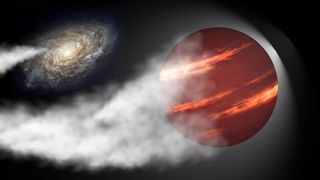
Runaway 'failed star' races through the cosmos at 1.2 million mph
By Robert Lea published
Citizen scientists have discovered what may be a brown dwarf racing through the cosmos at around 1.2 million miles per hour. Now astronomers want to know what launched it.
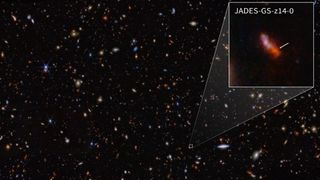
Can the James Webb Space Telescope see galaxies over the universe's horizon?
By Robert Lea published
The James Webb Space Telescope has revolutionized astronomy in just two years of operations, but how can it see a galaxy 33.8 billion light-years away in a universe that is only 13.8 billion years old?
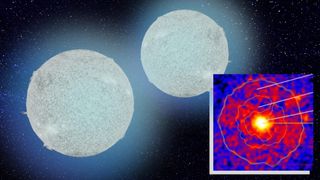
Cosmic crime scene reveals ancient supernova aftermath of dead star merger
By Robert Lea published
A "guest star," briefly seen in 1181, was created by colliding dead stars, according to new simulations that may finally solve an 800-year-old cosmic mystery.
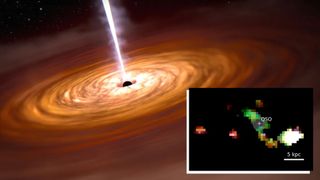
James Webb Space Telescope sees an ancient black hole dance with colliding galaxies
By Robert Lea published
Using the James Webb Space Telescope, astronomers have witnessed the dramatic dance between a supermassive black hole-powered quasar and merging galaxies less than a billion years after the Big Bang.
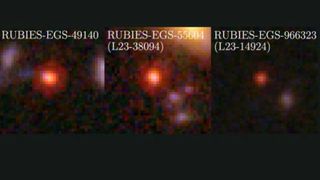
Forbidden black holes and ancient stars hide in these 'tiny red dots'
By Robert Lea published
The James Webb Space Telescope found "tiny red dots" in the early universe representing overgrown supermassive black holes and stars that are impossibly old for the infant cosmos.
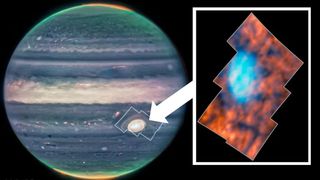
James Webb Space Telescope spies strange shapes above Jupiter's Great Red Spot
By Robert Lea published
Astronomers using the James Webb Space Telescope (JWST) have spotted a previously unseen structure in the atmosphere above Jupiter's famous Great Red Spot.
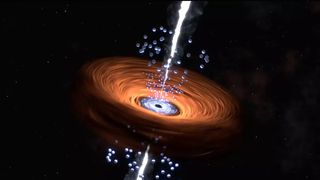
This impossibly massive black hole wasn't very hungry during the dawn of time
By Robert Lea published
Using the James Webb Space Telescope, astronomers have discovered an improbably huge black hole near the dawn of time, which doesn't seem to be eating near as much as it should.
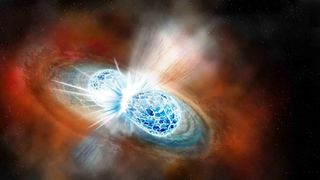
Neutron star collisions could briefly trap a bunch of cosmic ghosts
By Robert Lea published
New research suggests that colliding neutron stars can briefly "trap" ghostly particles called neutrinos, which could reveal new secrets about some of space's most extreme events.
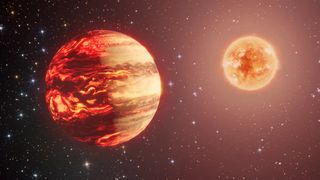
Gaia space telescope helps astronomers image hidden objects around bright stars
By Robert Lea published
The Gaia space telescope has spotted the dim companions of eight bright stars, suggesting we can expect new glimpses of distant planets.
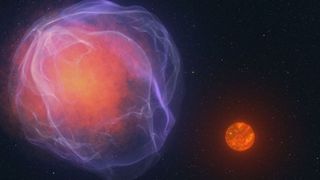
Something 'kicked' this hypervelocity star racing through the Milky Way at 1.3 million miles per hour
By Robert Lea published
A low-mass star has been discovered racing through the Milky Way at over a million miles per hour, a journey that began with either the supernova explosion of a vampire star or an encounter with black holes.
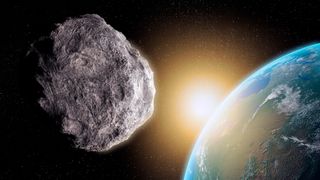
NASA's most wanted: The 5 most dangerous asteroids to Earth
By Robert Lea last updated
What is the most dangerous asteroid, how probable is an impact, and how much destructive power would a collision with Earth have? Here are 5 big space rocks that NASA is watching closely.
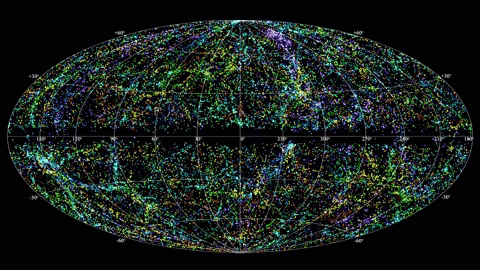
Scientists may finally be close to explaining strange radio signals from beyond the Milky Way
By Robert Lea published
Fast radio bursts erupt in the sky around 10,000 times a day, but scientists still struggle to explain them. New research could put astronomers one step closer to a solution.
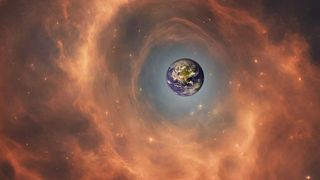
An encounter with 'something outside of the solar system' may have triggered an ice age on Earth
By Robert Lea published
Two million years ago, an encounter with a cold cloud of gas and dust could have caused our planet's "protective giant bubble" to draw back, potentially cooling our planet, new research claims.
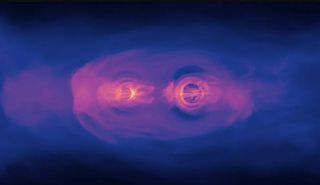
Black hole 'morsels' could finally prove Stephen Hawking's famous theory right
By Robert Lea published
Stephen Hawking suggested nothing lasts forever, including black holes. Scientists may have a way to prove it at last.
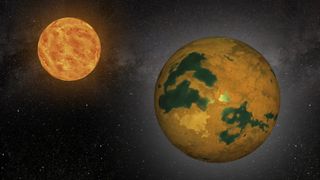
Real-life 'Star Trek' planet was actually just an illusion caused by a 'jittery' star
By Robert Lea published
New research shows that a planet spotted around the real-life star 40 Eridani A, famous for hosting Dr. Spock's fictional home world in 'Star Trek', may have been an optical illusion all along.
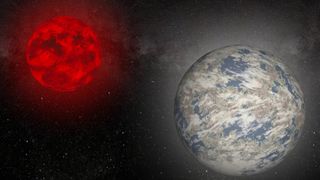
NASA detects Earth-size planet just 40 light-years away that's 'not a bad place' to hunt for life
By Robert Lea published
The exoplanet Gliese 12 b is tantalizingly close and moderately warm, situated just 40 light-years away around a red dwarf star. The potentially habitable planet could be a good place to search for alien life, scientists say.
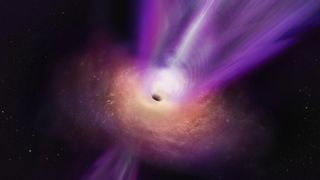
NASA spots 16 'Death Star' black holes blasting powerful beams at multiple targets
By Robert Lea published
Researchers using NASA's Chandra X-ray telescope have found that a group of "Death Star black holes are swiveling around and pointing at new targets, like the fictional space station in Star Wars."
Get the world’s most fascinating discoveries delivered straight to your inbox.
